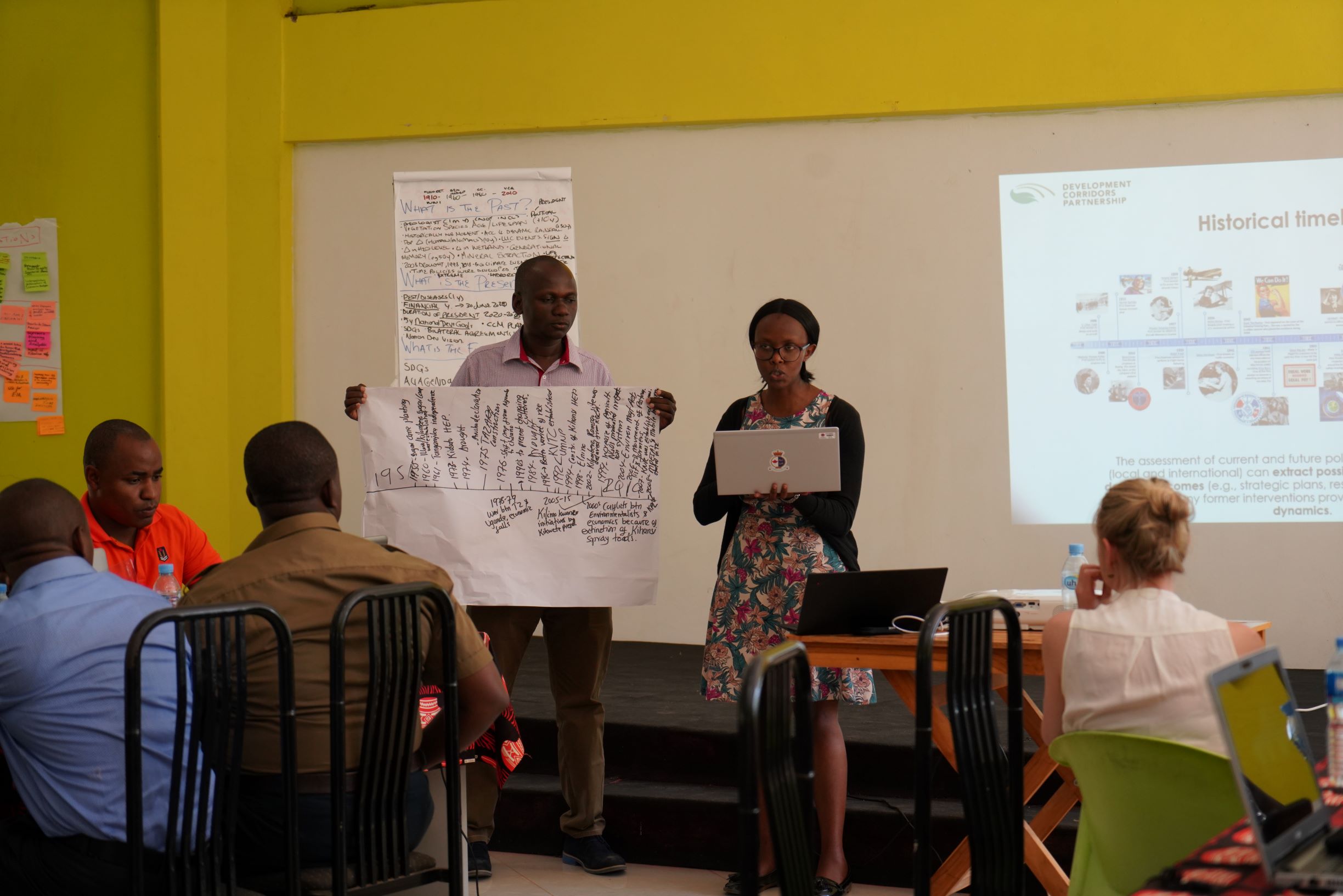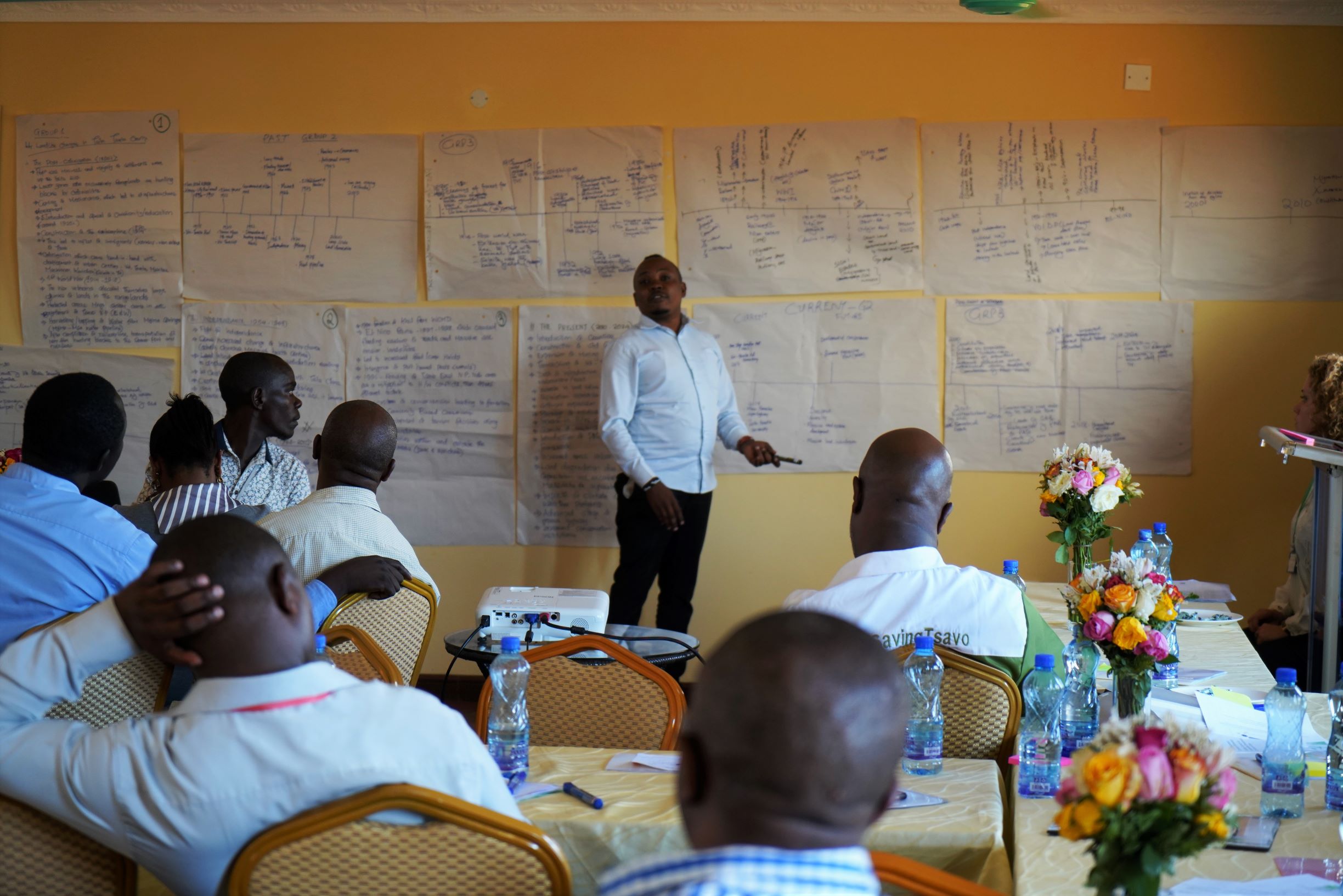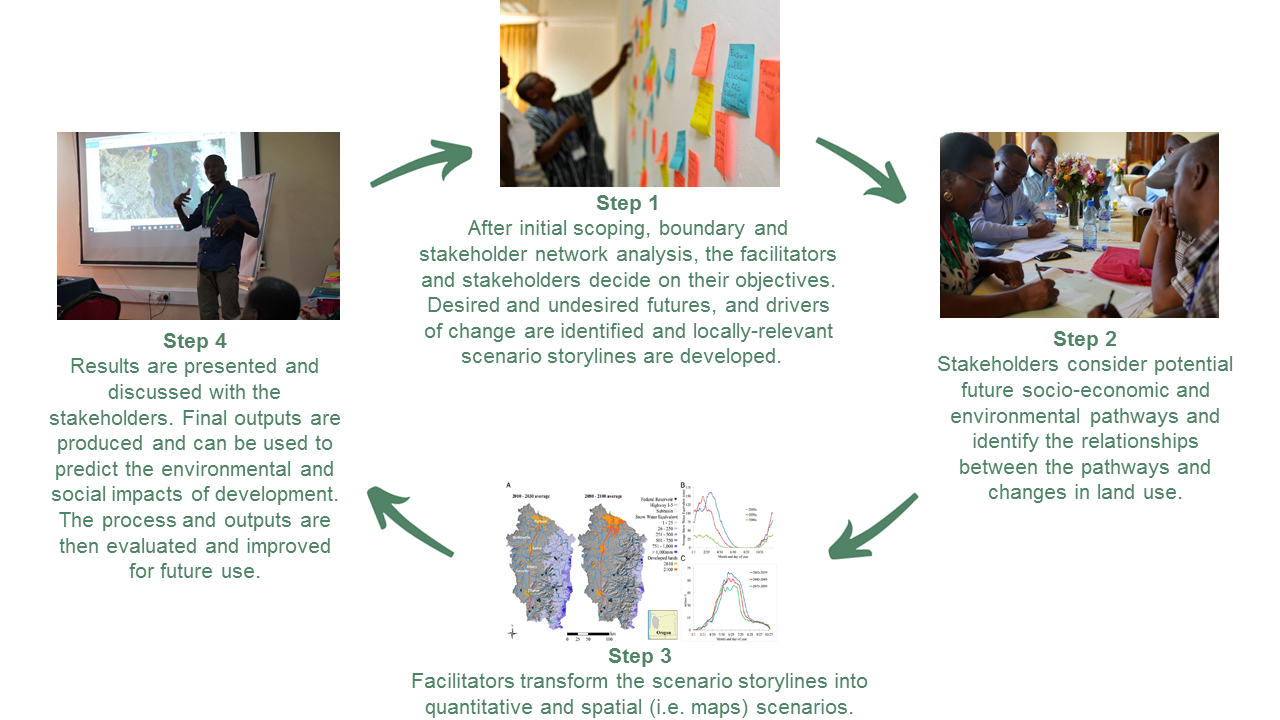
Participatory Scenario Planning
Why participatory scenario planning?
Development is occurring rapidly across Africa which makes it difficult to ensure that current and future planning and management does not compromise conservation objectives. To guarantee that development is sustainable in the long-term, we must anticipate changes in land use, ecosystem service provisioning, and livelihoods. This is a daunting task, particularly as we live in an uncertain world where social and environmental changes are unpredictable. In addition, stakeholders’ priorities are often conflicting, which means trade-offs need to be made in land management decisions (e.g. food vs. energy needs). One way to approach these challenges is to use participatory scenario planning to model different socio-economic, climatic and environmental futures, and changes in land use, at local, regional and national scales.
Participatory scenario planning allows us to assess the cumulative social and environmental impacts of development. It uses current and alternative development pathways to see how they will each affect diverse, plausible futures, which allows decision-makers to make better-informed decisions. Working with and providing learning opportunities for stakeholders is a key part of this process.
Participatory scenario planning for development corridors
In the Development Corridors Partnership, we use participatory scenario planning to systematically investigate the potential impacts of development corridors in Kenya and Tanzania, to ensure infrastructure investment is sustainable and resilient.
Dr Jessica Thorn (University of York), with the University of Nairobi Institute of Climate Change and Adaptation, African Conservation Centre, and Sokoine University of Agriculture College of Forestry and Natural Resources, facilitate our scenarios workshops. These workshops bring together researchers, community and non-governmental organisations, businesses, donors, and government officials, working across scales and sectors. Jessica and the team are investigating the impacts of the Standard Gauge Railway and the Southern Agricultural Growth Corridor of Tanzania as case studies of controversial, current and important development corridors. As of August 2019, workshops have been held across Kenya in Mombasa, Voi, Nairobi, Suswa, Naivasha, and Kisumu; and in Tanzania, in Ifakara in the Kilombero Valley. Our findings are triangulated using in-depth key informant interviews, household surveys, and field visits – examining multiple data sources to validate results, and gain a more detailed understanding of findings.
As a result of these workshops we will co-produce recommendations to address failures and present new opportunities to contribute to:
- national development agendas, such as the Vision 2030,
- the Sustainable Development Goals,
- the African Union Agenda,
- environmental safeguard mechanisms of contractors (e.g. Chinese) and donors (e.g. World Bank, African Development Bank), and
- future Forum on China-Africa Cooperation and Belt and Road Initiative investment guidelines.
The process itself also builds the capacity of key decision-makers in strategic foresight, and medium- to long-term vision building, aimed at present day decisions and mobilizing long-term joint actions.

Scenario planning using KESHO
The workshops use the scenarios tool KESHO which means “tomorrow” or “later” in KiSwahili, and has been developed and applied in East Africa since 2014, by the York Institute for Tropical Ecosystems.
KESHO has proven to be a useful tool as it:
- combines futures thinking and strategic foresight to tackle key conservation challenges across scales and sectors;
- can identify the potential impacts of policy intervention, or “what if?” scenarios;
- encourages collaboration by bringing together stakeholders with opposing views and goals, and highlighting the trade-offs between them;
- is representative of local communities, including those with strong traditional values or cultural identity, or who may have typically been ignored;
- gives the stakeholders a sense of ownership, which helps increase the credibility, legitimacy, and uptake of scenarios.
How does KESHO work?
KESHO involves facilitators and stakeholders, and is structured into four key steps:

More reading on scenarios
- Scenarios of Land Use and Land Cover Change and Their Multiple Impacts on Natural Capital in Tanzania (2018)
- From local scenarios to national maps: a participatory framework for envisioning the future of Tanzania (2016)
- Exploring the future land use-biodiversity-climate nexus in East Africa: an application of participatory scenario analysis (2015)
- Using Participatory Scenario Planning to identify ecosystem services in changing landscapes (2018)
- Views from two mountains exploring climate change impacts on traditional farming communities of Eastern Africa highlands through participatory scenarios (2019)
